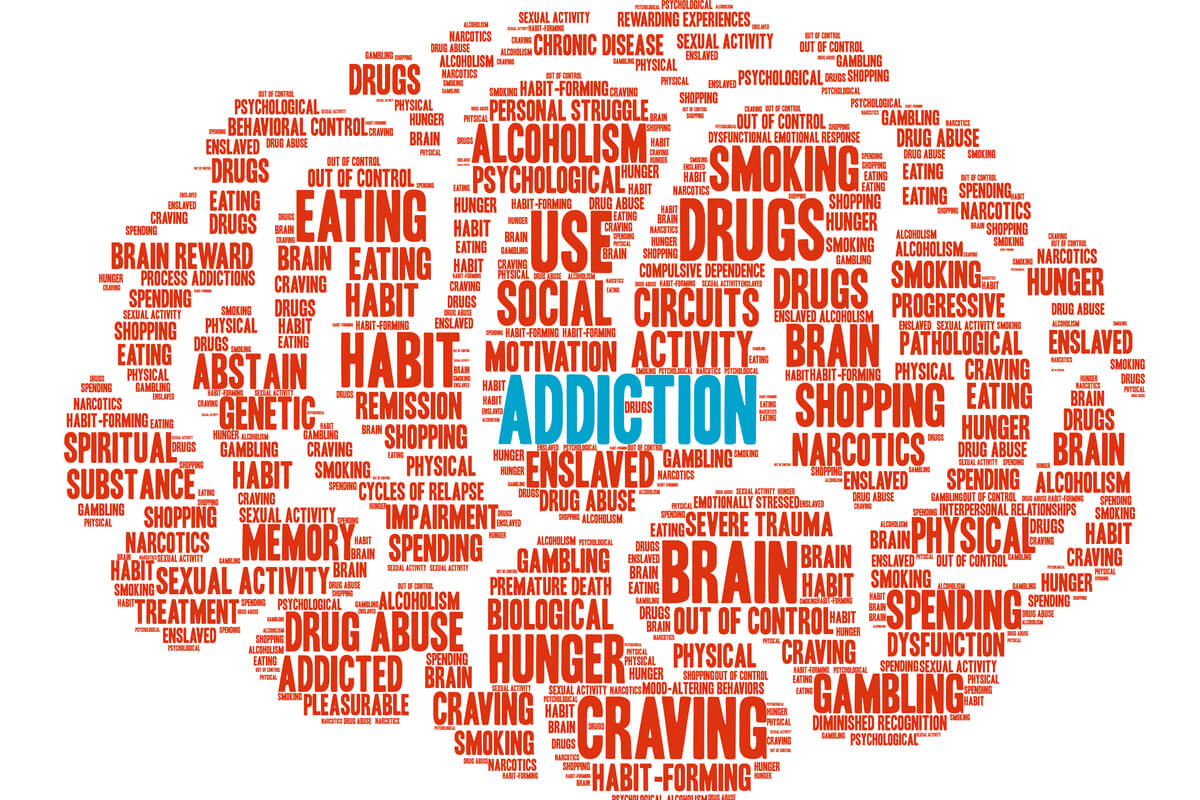
The biphasic effect of alcohol refers to the initial pleasant and stimulant-like feelings you experience after drinking followed by its depressant effects.
When you drink alcohol, you may initially feel happy and stimulated, what’s often called a buzz. When you keep drinking, these effects do not multiply. Instead, you will often feel the depressant and sedative effects. This is the biphasic effect.[3]
It may feel counterintuitive as it seems that the more you drink, the better you should feel, but that’s rarely the case. Once you pass the point of “diminished returns,” often (but not always) around a BAC (blood alcohol content) above 0.05%, you will start to feel the depressant effects. After all, alcohol is a central nervous system (CNS) depressant.
What Does Biphasic Mean?
Quick Answer
The term “biphasic” means “having two phases,” and when it comes to substances like alcohol (as well as cannabis), the biphasic effect means that low amounts of alcohol and high amounts can have opposite effects.
Distinct Phases of the Biphasic Effects of Alcohol
The biphasic effects of alcohol consumption occur in two separate phases and represent the curve between the “good” effects of alcohol and the “bad.”
About Phase I: BAC Below .05%
Alcohol can start to affect the brain and body within minutes of consuming it. During the first phase of the biphasic effect, it can feel good. You may feel alert, talkative, warm, stimulated, and happy when you start drinking alcohol. This typically occurs at BAC below 0.05%.
After continuing to drink, usually around a BAC of .05% or greater (although this varies widely between individuals depending on your genetics and your tolerance), you will enter phase II.
About Phase II: BAC of .08%
During phase II, alcohol’s depressant and sedative effects kick in.[4] You can start to feel tired and drowsy and may become impaired. Things like balance and coordination can feel off, and it can be harder to think clearly, remember things, or focus.
In the United States, the legal definition of intoxication is a BAC of 0.08%. It is a crime to drive with a BAC at this level or above.
How is Alcohol Metabolized in the Body?
When alcohol is consumed, it is absorbed through the small intestine and stomach. Then, it is passed into the bloodstream where it is quickly distributed to your brain, lungs, kidneys, and liver.
Your liver then works to break down the alcohol into non-toxic components, which are then passed back into the bloodstream and eventually excreted by the kidneys.
It typically takes an hour for your liver to break down the alcohol in one standard drink (one beer, one glass of wine, or one shot of alcohol).[1]
How quickly your body is able to metabolize alcohol depends on several factors, including:
- Age
- Weight
- Sex
- Race
- Medical conditions
It also depends on how much and how fast you drank, how much food is in your system, and any medications you’re taking.
What Symptoms Can I Expect at Various BACs?
Based on BAC levels, the following effects can occur when drinking alcohol (note these are estimates and vary widely between individuals):[2]
- BAC of up to 0.05%: Mild impairment of coordination and balance as well as relaxation
- BAC between 0.06% and 0.15%: More impairment of motor skills, decision-making abilities, speech, memory, cognitive function, and attention as well as drowsiness and sedation
- BAC between 0.16% and 0.30%: Severe impairment of reaction time, balance, coordination, judgment, speech, memory, and cognition along with potential blackouts (memory loss), loss of consciousness, or vomiting
- BAC between 0.31% and 0.45%: Risk of potential life-threatening alcohol overdose as life-sustaining functions are dangerously suppressed
Risks of Acute Alcohol Use
The more alcohol you drink at a time, the higher the potential risks. Drinking too much too fast can lead to an alcohol overdose or alcohol poisoning, which can cause coma or even death. Additional risks of alcohol intoxication include the following:[5]
- Injury or accident
- Higher odds of being involved in or a victim of a crime
- Risky sexual behaviors that can lead to the development of an infectious disease or unwanted pregnancy
- Higher rate of alcohol misuse with repetition
People who are sensitive to the biphasic effects of alcohol are also at a higher risk for developing alcohol use disorder.[5]
Risks of Chronic Alcohol Use
The long-term effects of heavy drinking can include the following:[5]
- Hypertension
- Digestive issues
- Increased risk for stroke and heart disease
- Liver disease
- Lowered immune system
- Anxiety and depression
- Risk for alcohol-related dementia and memory issues
- Heightened risk for developing many forms of cancer
- Social and relationship issues as well as problems at work, school, or home
- Alcohol tolerance, dependence, and alcohol use disorder
What if You Are a Moderate Drinker, Heavy Drinker, or Alcoholic?
Drinking regularly increases tolerance for alcohol, which can shift the biphasic effect or biphasic curve some. It can take more alcohol to reach the top of the bell curve and progress to phase II. Moderate or heavy drinkers often remain in phase I longer and suffer fewer of the negative consequences of phase II.
While this may seem like a payoff in the short term, it can lead to serious consequences long term. Regular heavy drinking can lead to serious health consequences, the development of irreversible chronic health conditions such as liver disease, dementia, and heart failure, and can lead to alcohol use disorder (AUD) as well as a syndrome of severe or even life-threatening alcohol withdrawal.
The Centers for Disease Control and Prevention (CDC) defines the following drinking levels:[5]
- Moderate: 2 drinks or less in a day for a man or 1 drink or less for a woman
- Heavy drinking: 15 drinks in a week for a man or 8 drinks in a week for a woman
- Alcohol use disorder: Regular patterns of excessive drinking as well as compulsive drinking, alcohol cravings, alcohol dependence, and mental, physical, and social issues related to drinking
The bottom line: Understanding a little more about the biphasic effects of alcohol can help us all to look at our own drinking patterns, how they change over time, and whether or not we might be developing more concerning symptoms. If you have concerns about your drinking or that of a loved one, reach out to your doctor or an addiction treatment program for help. You may want to consider a Medication for Addiction Treatment (MAT) like naltrexone, which can curb cravings and block the rewarding effects of alcohol.
Frequently Asked Questions About Alcohol’s Biphasic Effects
Drinking alcohol can cause a rush of endorphins to be released in the reward center of the brain, leading to euphoria and feelings of pleasure. This is why initially, alcohol can make you feel happy before you begin to feel the depressant effects.
Yes, marijuana or cannabis also causes biphasic effects, with low doses causing relaxation and feelings of pleasure and high doses often causing paranoia, panic attacks, or hallucinations. Some opioids may also have biphasic effects as well.
Alcohol is a CNS depressant, which means it slows brain activity and breathing. These depressant effects can sedate you, making you feel drowsy, sleepy, or sluggish.
Everyone’s alcohol biphasic curve may look different depending on their alcohol tolerance, genetics, drinking habits, mental and physical health, liver health, age, gender, race and whether you mix alcohol with other substances.
- What Happens When You Drink Alcohol? NiDirect. https://www.nidirect.gov.uk/articles/what-happens-when-you-drink-alcohol. Accessed August 2022.
- Understanding the Dangers of Alcohol Overdose. National Institute on Alcohol Abuse and Alcoholism. https://www.niaaa.nih.gov/publications/brochures-and-fact-sheets/understanding-dangers-of-alcohol-overdose. May 2021. Accessed August 2022.
- The Biphasic Effects of Alcohol: Comparisons of Subjective and Objective Measures of Stimulation, Sedation, and Physical Activity. Alcoholism, Clinical and Experimental Research. https://pubmed.ncbi.nlm.nih.gov/17949393/. November 2007. Accessed August 2022.
- Alcohol has a Biphasic Effect on Blood Pressure and Increases Heart Rate. Cochrane. https://www.cochrane.org/CD012787/HTN_alcohol-has-biphasic-effect-blood-pressure-and-increases-heart-rate. July 2020. Accessed August 2022.
- Alcohol Use and Your Health. Centers for Disease Control and Prevention. https://www.cdc.gov/alcohol/fact-sheets/alcohol-use.htm. April 2022. Accessed August 2022.

Reviewed By Peter Manza, PhD
Peter Manza, PhD received his BA in Psychology and Biology from the University of Rochester and his PhD in Integrative Neuroscience at Stony Brook University. He is currently working as a research scientist in Washington, DC. His research focuses on the role ... Read More
- What Happens When You Drink Alcohol? NiDirect. https://www.nidirect.gov.uk/articles/what-happens-when-you-drink-alcohol. Accessed August 2022.
- Understanding the Dangers of Alcohol Overdose. National Institute on Alcohol Abuse and Alcoholism. https://www.niaaa.nih.gov/publications/brochures-and-fact-sheets/understanding-dangers-of-alcohol-overdose. May 2021. Accessed August 2022.
- The Biphasic Effects of Alcohol: Comparisons of Subjective and Objective Measures of Stimulation, Sedation, and Physical Activity. Alcoholism, Clinical and Experimental Research. https://pubmed.ncbi.nlm.nih.gov/17949393/. November 2007. Accessed August 2022.
- Alcohol has a Biphasic Effect on Blood Pressure and Increases Heart Rate. Cochrane. https://www.cochrane.org/CD012787/HTN_alcohol-has-biphasic-effect-blood-pressure-and-increases-heart-rate. July 2020. Accessed August 2022.
- Alcohol Use and Your Health. Centers for Disease Control and Prevention. https://www.cdc.gov/alcohol/fact-sheets/alcohol-use.htm. April 2022. Accessed August 2022.
Download Our Free Program Guide
Learn about our program, its effectiveness and what to expect
Related articles
Imagine what’s possible on the other side of opioid use disorder.
Our science-backed approach boasts 95% of patients reporting no withdrawal symptoms at 7 days. We can help you achieve easier days and a happier future.









